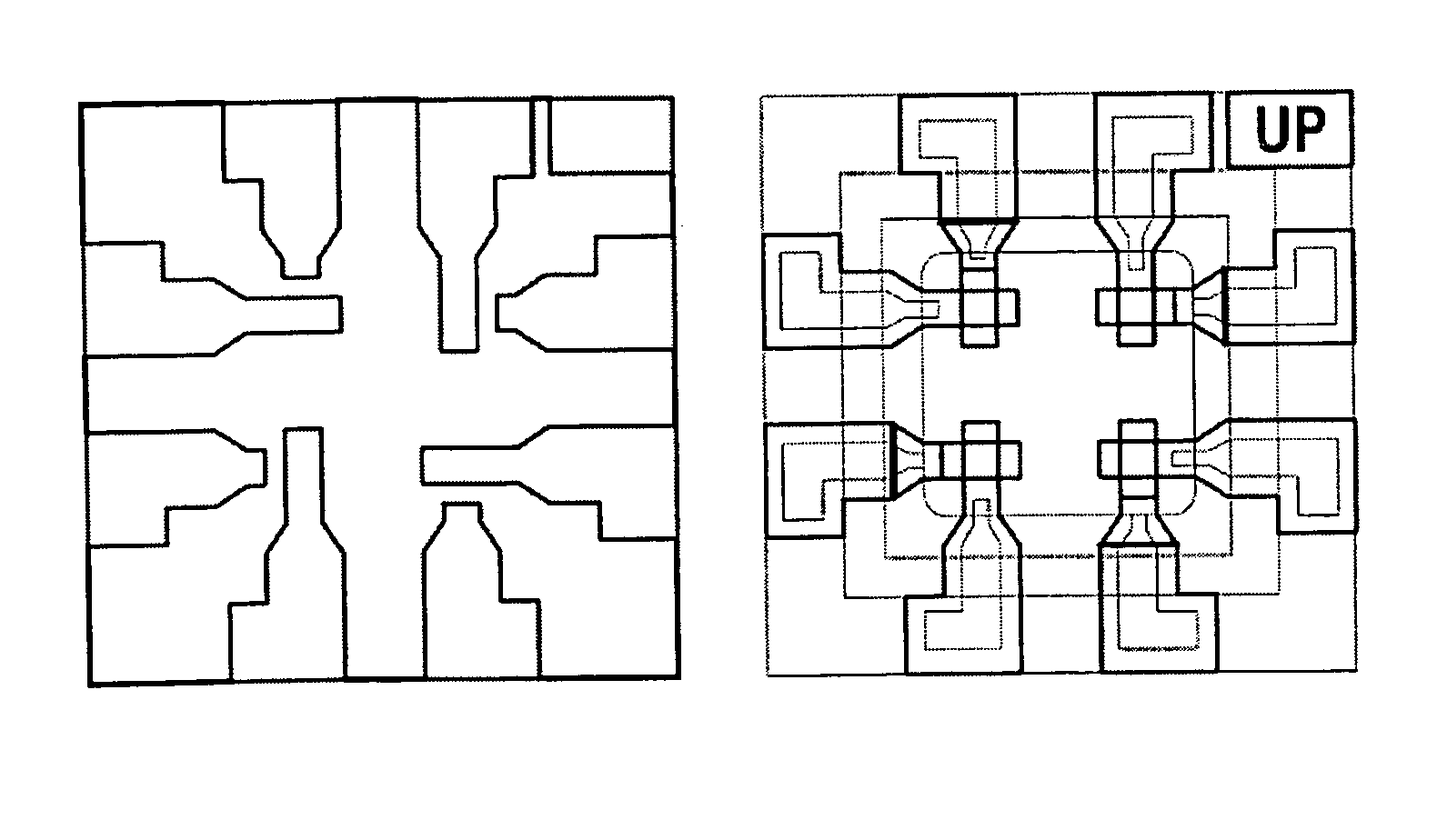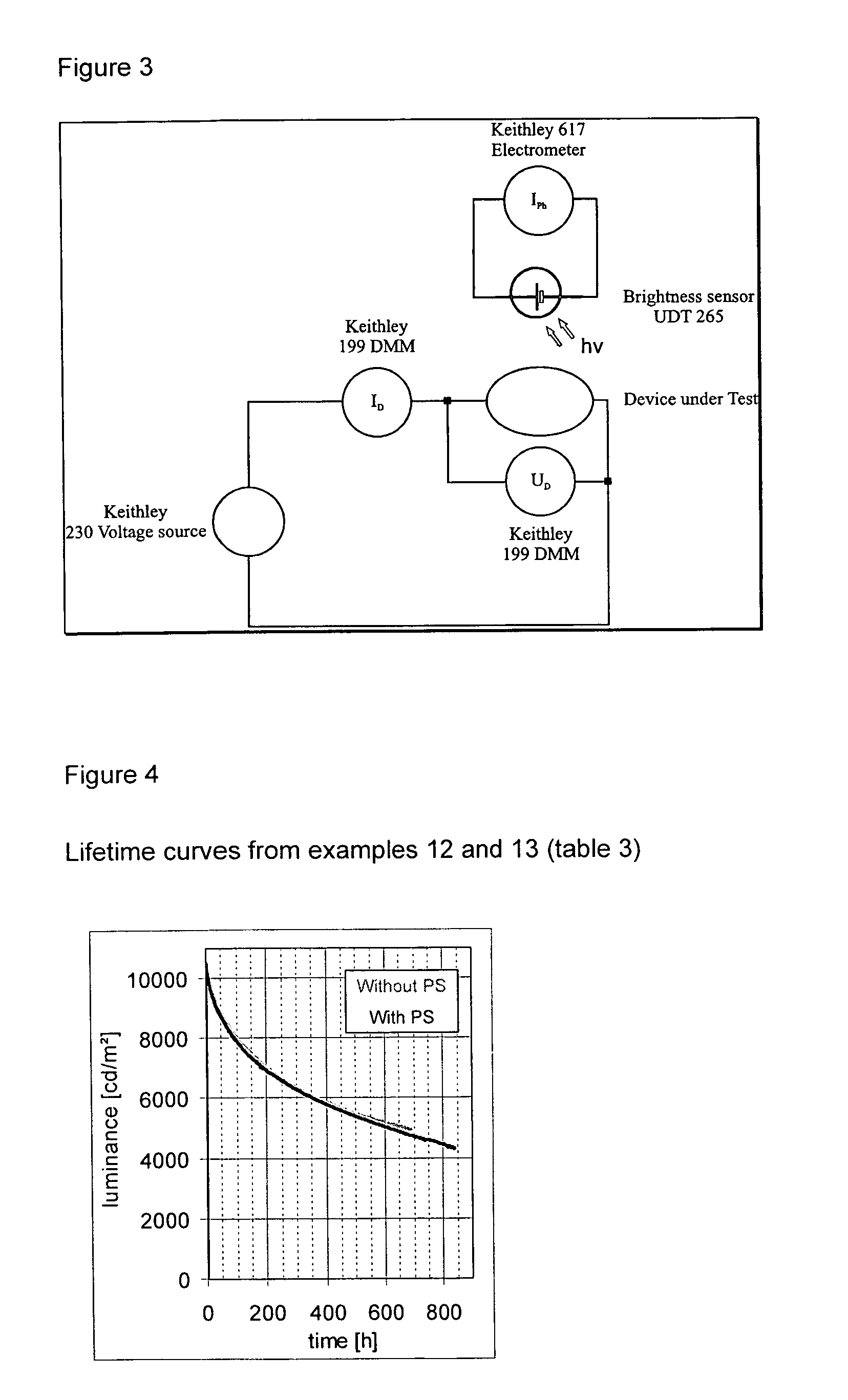Compositions comprising polymeric binders
a polymer binder and polymer technology, applied in the manufacture of final products, anthracene dyes, inks, etc., can solve the problems of limiting the application of compositions, olefins that cannot be specified in detail, and high cost of materials, so as to the production of them, improve the lifetime and and improve the efficiency of olefins. a high level
- Summary
- Abstract
- Description
- Claims
- Application Information
AI Technical Summary
Benefits of technology
Problems solved by technology
Method used
Image
Examples
working examples
Comparative Example 1
[0138]A printing ink was prepared by mixing a phosphorescent compound according to formula 107
and a host material having the formula 141
in a weight ratio of 1:4 (phosphorescent compound 107: host material 141) and solving the mixture obtained in 3,4-dimethylanisole (3,4-DMA). The concentration of the semiconducting compounds was about 1.6% by weight.
[0139]The OLED inks was ink jet printed using a Dimatix DMP 2800 printer on glass substrates (30 mm wide) covered with a 4 pixels structure of ITO, a PEDOT layer and HIL-012 layer. 6 mm squares were printed using 15, 20, 35 and 40 drop spacing (ds). Two drying procedures were used, a hot plate at 100° C. and vacuum at room temperature to assess the differences in film quality.
[0140]The HIL-012 layer did not wet or the swaths merge when using 35 and 40 ds. The printing performed better using 15 and 20 ds with better wetting but drying fronts seen on the film.
example 1
[0141]Essentially, Comparative Example 1 was repeated. However, an inert polymeric binder has been added to the printing ink. The printing ink comprised 0.4% by weight polystyrene having a weight average molecular weight of 200,000 g / mol (as supplied by Sigma Aldrich) and 1.6% by weight of the semiconducting compounds as mentioned in Comparative Example 1.
[0142]The HIL-012 layer was wetted acceptable for 25-40 ds and not all the swaths merge after printing. However, the results are improved in comparison to the Comparative example.
example 2
[0143]Essentially, Comparative Example 1 was repeated. However, an inert polymeric binder and a wetting agent have been added to the printing ink. The printing ink comprised 0.4% by weight polystyrene having a weight average molecular weight of 200,000 g / mol (as supplied by Sigma Aldrich), 1% by weight 3-ethoxy-1,1,1,2,3,4,4,5,5,6,6,6-dodecafluoro-2-trifluoromethyl-hexane (HFE 7500 commercially available from 3M™ NOVEC™ Engineered Fluid) and 1.6% by weight of the semiconducting compounds as mentioned in Comparative Example 1.
[0144]A good wetting of the HIL-012 layer was achieved. Nevertheless, small pinholes are visible on the layers for 20 ds and above. However, the results are improved in comparison to the Example 1.
PUM
| Property | Measurement | Unit |
|---|---|---|
| surface tension | aaaaa | aaaaa |
| glass transition temperature | aaaaa | aaaaa |
| boiling point | aaaaa | aaaaa |
Abstract
Description
Claims
Application Information
 Login to View More
Login to View More - R&D
- Intellectual Property
- Life Sciences
- Materials
- Tech Scout
- Unparalleled Data Quality
- Higher Quality Content
- 60% Fewer Hallucinations
Browse by: Latest US Patents, China's latest patents, Technical Efficacy Thesaurus, Application Domain, Technology Topic, Popular Technical Reports.
© 2025 PatSnap. All rights reserved.Legal|Privacy policy|Modern Slavery Act Transparency Statement|Sitemap|About US| Contact US: help@patsnap.com



